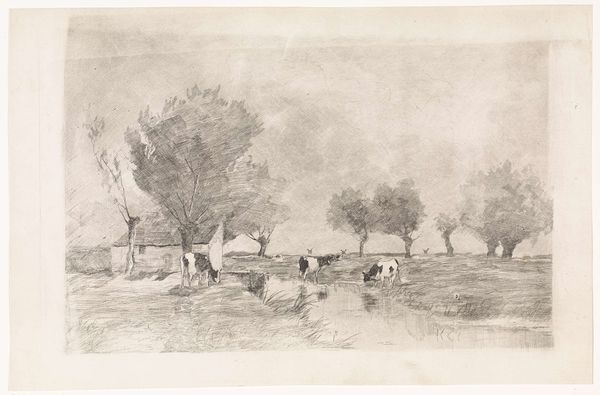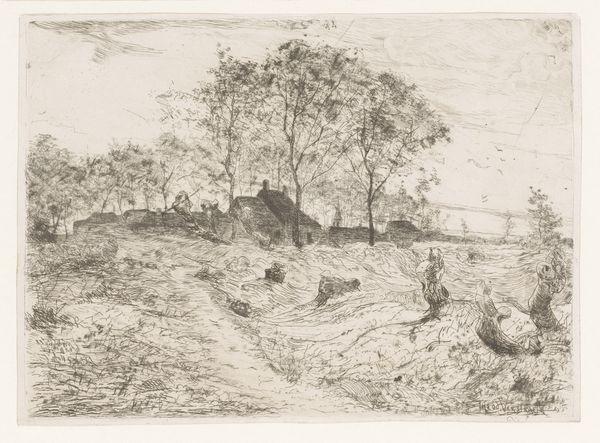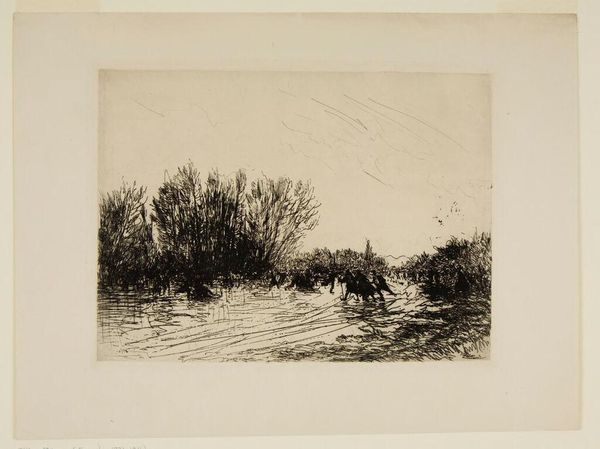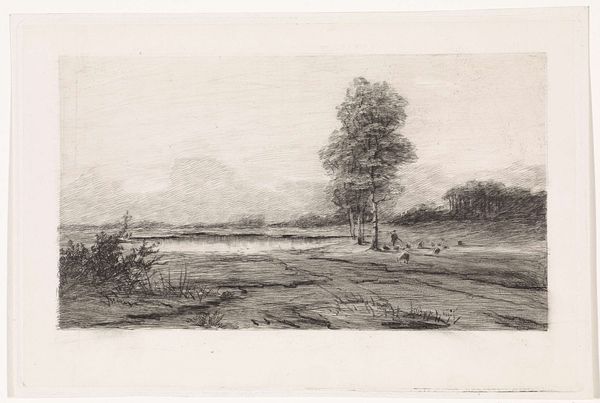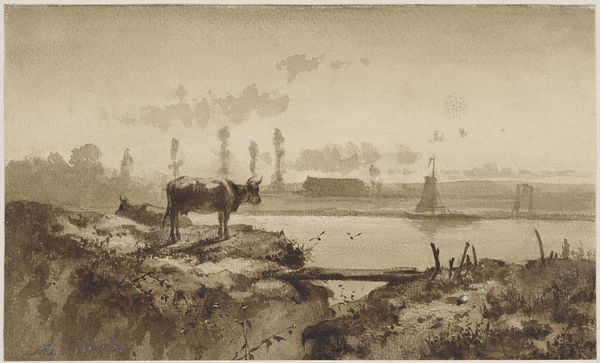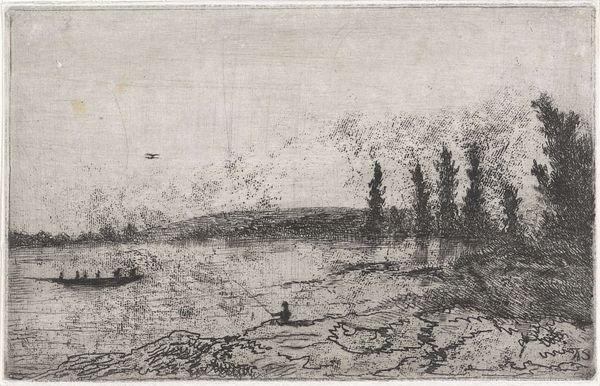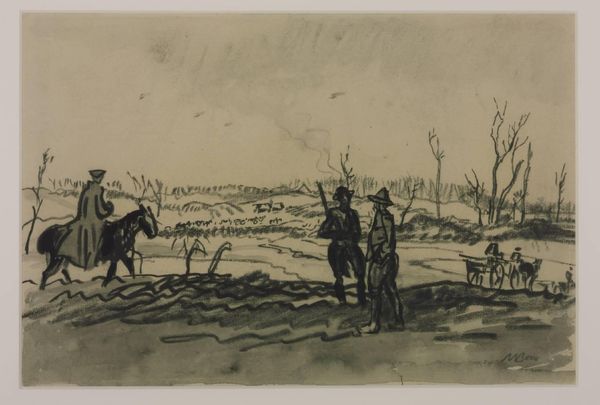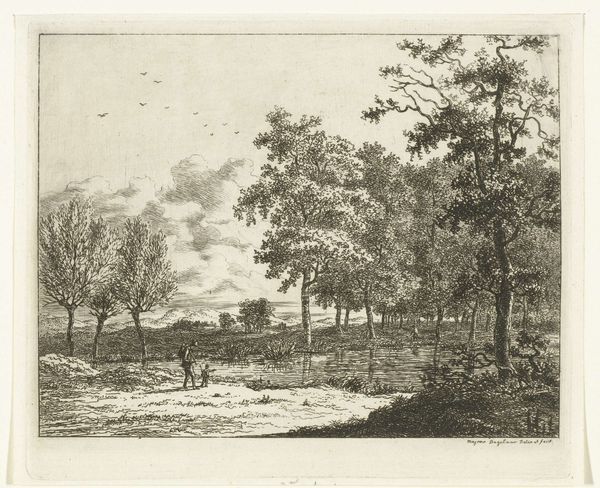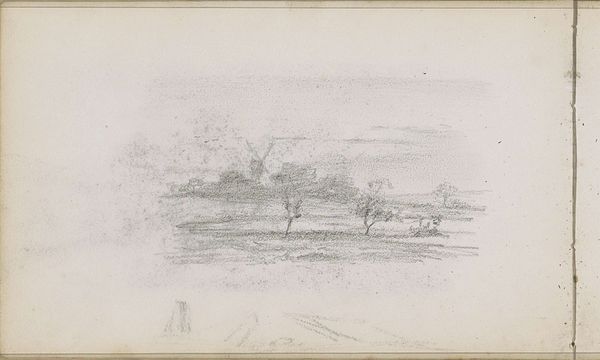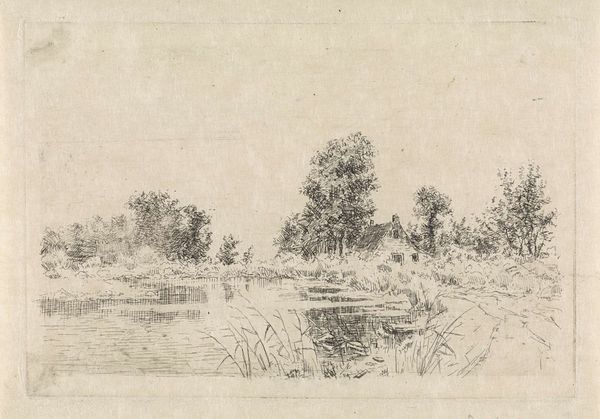
Dimensions: height 207 mm, width 311 mm
Copyright: Rijks Museum: Open Domain
Curator: I find this pencil drawing rather somber, a Dutch landscape rendered in tones of gray. A kind of quiet resignation settles over it. Editor: Indeed, there’s a tranquility but perhaps it reflects the realities of land use in the late 19th century. This drawing, entitled "Polderlandschap met koeien," or "Polder Landscape with Cows," was created by Willem (II) Steelink in 1894. Curator: Those cows look supremely unbothered by land politics, I must say. Did he capture that perfectly, that bovine serenity. They’re the anchor of this composition. But everything else, the trees, that sliver of pond…there’s a transient feel to it all. Editor: It’s interesting you say that, considering Steelink came from a family deeply rooted in the art world, representing the artistic milieu of The Hague School, known for its down-to-earth Realist and Impressionistic landscape art. Curator: Down-to-earth. Yes, that’s what it is. Honest, in a way that maybe paintings aren't. A bit mournful too, but there is beauty, if you allow it. He is pulling me into his memories, and these serene observations of a rural existence feel precious and tender. Editor: That melancholic note you picked up might stem from anxieties around increasing urbanization at that time. This polder, essentially reclaimed land, symbolizes human intervention in nature and its ever-changing landscape, reflecting larger socio-political themes. Steelink shows us the quiet struggle of living on the margins. Curator: It is a tender rendering. You get the sense he wants you to pause, observe it all. It doesn't strike me as romantic. But what does strike me, I think, is that it really could be any landscape from any moment. Very timeless. Editor: A moment captured from an era grappling with its identity as industrialization redefined humanity's relationship with its surroundings. Looking at it today gives us an artifact and perspective on environmental issues in the contemporary landscape. Curator: Yes, the beauty here isn’t necessarily about grand vistas, but something more delicate. A fleeting quality is now rendered timeless, now preserved in time as we keep returning to contemplate its meaning and implications.
Comments
No comments
Be the first to comment and join the conversation on the ultimate creative platform.
